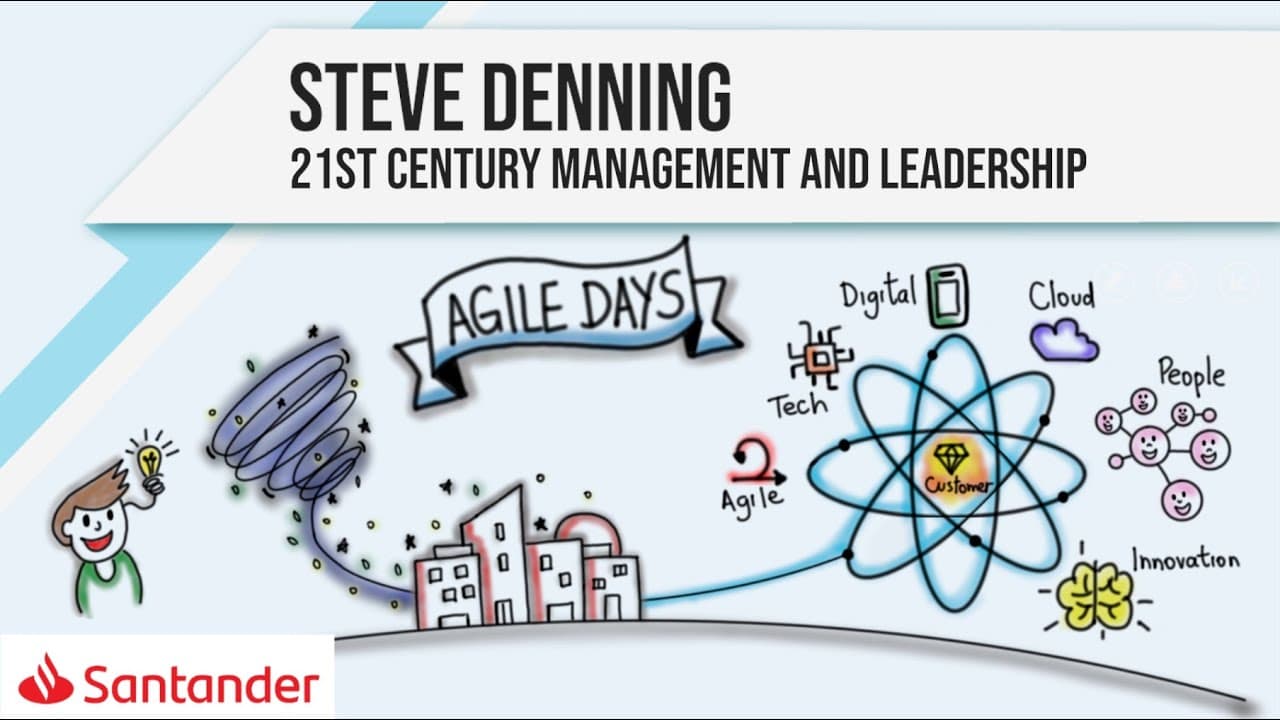My name is Steve Denning, and I’m talking to you today about 21st-century management—what it takes to create and lead an organization in this complex, fast-changing world.
My Journey
In case you're wondering how I got here, I was born in Sydney, Australia. I worked as a lawyer and later studied more law at Oxford University. Eventually, I joined the World Bank in Washington, DC, where I worked for several decades.
The World Bank, for a time, was run by Robert McNamara—one of the most famous managers of the 20th century. Under his leadership, the World Bank was highly disciplined and effective, continually increasing its loan-making operations.
However, while the organization was called a "bank," its real purpose was the mercurial task of relieving global poverty—something quite different from simply making loans. We spent enormous effort designing and securing approval for the perfect project or loan, only to find that, by the time of implementation, circumstances had changed, and our clients needed something different.
Throughout my time at the World Bank, I kept wondering: Surely, there must be a better way to manage work like ours.
The Dilemma of Large Organizations
Big firms like the World Bank often face a critical dilemma, which I have illustrated in this chart. They must choose between:
- Speedy innovation—which lacks discipline.
- Disciplined execution—which is slow.
It seemed as though we could have one or the other but never both. Small experiments in new management approaches existed, but they didn’t work at scale and rarely lasted.
I left the World Bank in 2000 after leading a major strategic shift and spent the next decade helping Fortune 500 companies do the same. However, by 2008, I noticed a troubling pattern: these strategic shifts didn’t seem to last. Firms would commit to change, start implementing it, and then gradually slide back to their old ways.
Discovering a Better Way
Determined to find out why this kept happening, I explored different industries. Surprisingly, I found answers in an unexpected place—software development.
Software developers had figured out how to achieve both speedy innovation and disciplined execution at the same time. They didn’t have to choose—they had found a way to do both. And I thought, "This is amazing! No one knows about it—I have to tell the world!"
In retrospect, it makes sense that these ideas emerged in software development. The field was dealing with rapid change and immense complexity, where unfinished projects wasted billions of dollars. Developers had to find a better way.
Reassessing 20th-Century Management
Given this realization, you might be surprised to hear me praise the 20th-century management practices I had struggled with under Robert McNamara. In fact, I believe those practices were one of the greatest accomplishments of human civilization. They led to the greatest improvement in material well-being in thousands of years.
20th-century management converged on three core principles:
- Goal: The firm’s goal was to produce a reliable product for sale.
- Structure of Work: Organizations followed bureaucratic hierarchies where individuals reported to bosses and fulfilled roles. Efficiency and reliability required strict control.
- Dynamic: Firms operated through a vertical hierarchy of authority, where strategy was set at the top, and power trickled down.
These principles shaped business behavior for over a hundred years and continue to influence many organizations today. However, the world changed, and these principles became increasingly ineffective.
The Changing Business Landscape
Four major shifts disrupted traditional management:
- The pace of change increased exponentially, driven by global competition.
- New technologies emerged at an unprecedented rate.
- Knowledge work became dominant, where employees often knew more than their bosses.
- Power in the marketplace shifted to the customer, who now had more information and options than ever before.
Firms struggled to keep up. Managers tried everything—downsizing, reorganizing, delaying, re-engineering—but nothing worked. The issue wasn’t that the machine was broken; the problem was that the firm was no longer a machine. It had become something different.
The Emergence of a New Management Approach
In the early 2000s, some firms started experimenting with new ways of running organizations. At the time, they were small, unknown startups—Amazon, Google, Haier, Morningstar. Today, they are some of the most successful companies in the world.
These new management approaches had different names: Agile, Radical Management, Project Aristotle (Google), Two-Pizza Teams (Amazon), Mission Command (US military), Adhocracy (Professor Birkinshaw). I call it 21st-century management.
Leading firms have converged on a new set of principles and processes that are, in fact, the opposite of 20th-century management:
- Goal: Instead of focusing on selling products, the goal shifted to creating value for customers and users. Profits became a result, not the objective.
- Structure: Work was no longer organized through rigid hierarchies. Instead, small, self-organizing teams operated in short cycles.
- Dynamic: Authority moved from a vertical hierarchy to a horizontal network of competence, where ideas could come from anywhere.
The Shift from Product to Customer-Centricity
Traditional firms focused on selling the products they produced. 21st-century firms think backward from what the customer needs and then figure out how to deliver it—regardless of internal constraints.
Many senior managers claim they have always been "customer-oriented." But there’s a huge difference between "customer orientation" and "customer obsession." The latter means continuously reshaping structures and processes to meet customer needs.
Structural and Cultural Transformation
To succeed, organizations had to:
- Empower small, self-organizing teams working in short iterations.
- Ensure continuous integration, avoiding large-scale failures caused by disjointed work.
- Move from vertical hierarchies to networks of competence, where leadership nurtures ideas rather than dictates them.
The Role of Leadership in Transformation
Organizations adopting this model faced another challenge—their existing business processes were still rooted in 20th-century principles. To complete the transformation, they had to reinvent leadership, strategy, innovation, and talent management.
For instance, Microsoft took years to transition from a slow-moving bureaucracy to an agile organization. The shift only gained momentum when Satya Nadella, a champion of the new approach, became CEO in 2014. Under his leadership, Microsoft fully embraced 21st-century management principles.
Conclusion
The shift to 21st-century management isn’t just a trend—it’s a necessity. Firms that fail to adapt struggle to keep up with change, while those that embrace these principles thrive. The key is recognizing that organizations are no longer machines—they are dynamic, evolving networks built around customer value.
We are facing one of the biggest management revolutions in history. The question is: Will your organization be part of it?



